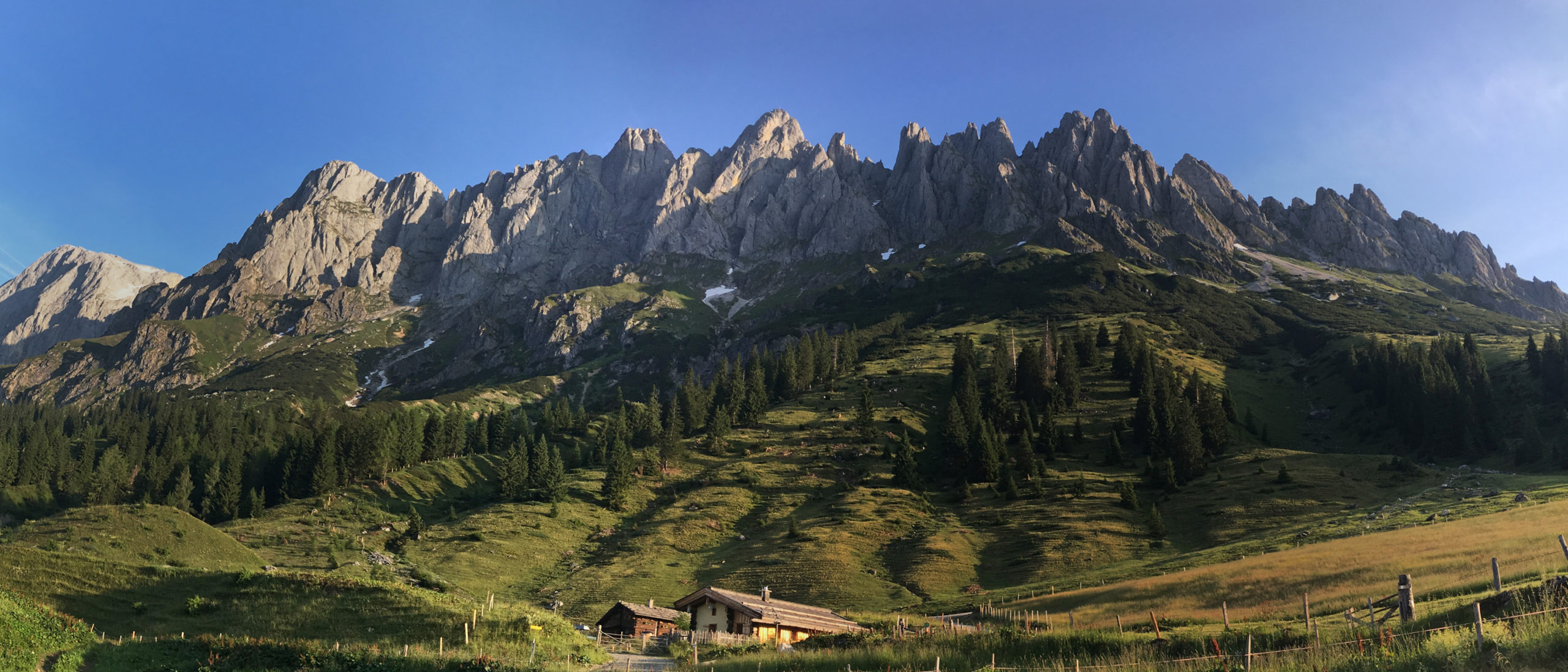Hochkönig Massif - Mandlwand Walls
Geologically, the Hochkönig massif belongs to the Northern Calcareous Alps. The Mandlwand walls form the southern edge of the approx. 15 sq. m. large Hochkönig plateau, on which the only limestones alpine glacier in Salzburg, the "Übergossene Alm" is located
The massive Dachstein limestone that buiilds up the Mandlwand walls comes from the reef of the Tethys Ocean of the Upper Triassic period (200 million years), and is rich in fossils such as corals, sponges, mussels, and snails. Due to the local situation of the relative proximity of the Northern Calcareous Alps to the Greywacke Zone, the rock here has strong tectonic features. This results in the typical turret and spike formation.
The most important peaks of the Mandlwand walls all have a name. The highest of them is Gamsleitenkopf at 2,532 m. The others are called Hochstellkopf (2,478 m), Kleiner Sattelkopf (2,391 m), Großer Sattelkopf (2,526 m), Stangenkopf (2,400 m) and the two Vierrinnenköpfe (2, 300 m and 2,364 m).
All the towers and pillars have classic east alpine climbing routes. Bischofshofen alpine climber Albert Precht (1947-2015) scaled the 600 m high south face of the Hochkönig for the first time in 1983.
Kids
Alpine flora
There are many special plants in the high mountains that are well adapted to the harsh and cold climate. Low shrubs and small flowers often grow there, which can protect themselves well from strong winds and snow. Sometimes you can also see colourful alpine flowers such as edelweiss or gentian, which only grow up there. These plants are very brave, as they have to adapt to the icy cold and the thin soil, which is often stony. In summer, they bloom in the most beautiful colours and make the high mountains a very special place.
Alpine flora
The high mountains are home to robust plants that are adapted to the extreme conditions. Low shrubs such as dwarf shrubs and cushion plants often grow on the barren ground. These have dense leaves and lie flat on the ground to protect themselves from strong winds and cold. Typical high mountain plants are the alpine edelweiss with its white, furry flowers and the blue gentian, which adorns the slopes and meadows with its blaze of colour in the summer months. The flora in the high mountains is not only beautiful to look at, but is also proof of how plants can adapt to extreme altitudes.
Alpine Flora
The flora in the high mountains is characterised by extreme conditions that challenge the growth of plants. These high altitudes are dominated by robust species such as dwarf shrubs, which grow flat on the ground to protect themselves from the strong winds and long winter months. The soils are often stony and poor in nutrients, which makes survival challenging. Nevertheless, specialised plants such as the alpine edelweiss, known for its furry white flowers, and the gentian, which stands out with its deep blue flowers, have adapted to this environment. Their short growing season in summer is characterised by intense colours and a remarkable variety of flowers, making the high mountains a unique and fascinating landscape.





